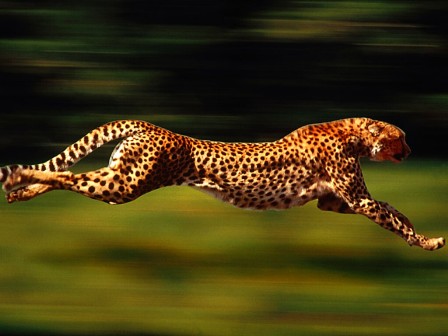Dehradun : With the Wildlife Institute of India (WII) here having drawn out a blue print for the import and rehabilitation of cheetahs in the plains of Rajasthan and MP that stands submitted with Government of India; it is but a matter of time that the animal, which once roamed the lands, will again be visible in the country.
As per records, the cheetah considered to be one of the most fleet-footed animal, roamed in large numbers in the countries of the world, but being a hunter’s delight there numbers decreased significantly. By 2000, just about 7500 were said to exist in their habitats across the globe.
While the Asiatic cheetah is said to be now visible only in Iran, over 25 per cent of the population of the animal is concentrated in Namibia in Africa. This is from where the WII hopes to import 18 of the animals in a bid to rehabilitate them once again in the country.
Incidentally the last of the cheetahs, that roamed in India was killed in 1947. It is said that the raja of Sarguja, a keen hunter, who is attributed with having killed about 1360 tigers was the person who killed the last cheetah in the country.
As per the blue print drawn out, the programme which will be led by renowned cheetah expert Lawry Marker, envisages the first lot of 18 cheetahs to be flown in a special aircraft from Namibia. They will be rehabilitated in the Kuno, Palpur and Nairodohi sanctuaries of Madhya Pradesh and Shahgarh sanctuary of Rajasthan. Experts believe that these sanctuaries have sufficient herbivore population to meet the requirements of the cheetahs.
According to sources in the WII, forest officials and scientists of Rajasthan and Madhya Pradesh have already been sent to Africa for undertaking a six-month training. As many as six international organizations will be pooling in their resources for the transportation and rehabilitation of the cheetahs.
They said that the cheetah was equally important to the ecology of the grasslands of central India as the snow leopard is to the ecology of the Himalayas and the dolphin to the ecology of the country. Once rehabilitated, India will be the only country in the world where all the eight breeds of the large cat family will be available.
A journalist with over 40 years of experience, Jagdish Bhatt was Editor, Hill Post (Uttarakhand).
Jagdish had worked with India’s leading English dailies, which include Times of India, Indian Express, Pioneer and several other reputed publications. A highly acclaimed journalist, he was a recipient of many awards
Jagdish Bhatt, aged 72, breathed his last on 28th August 2021 at his Dehradun residence.




